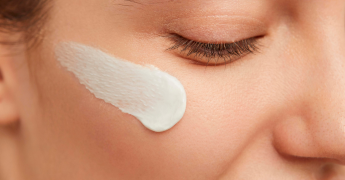
Hyperpigmentation is a common skin concern that affects people of all skin types. It occurs when certain areas of the skin produce more melanin than usual, resulting in dark spots, uneven skin tone, and patches of discoloration. While there are several treatments available, one ingredient that has gained significant attention in recent years for its effectiveness against hyperpigmentation is tranexamic acid (TXA).
But what exactly is tranexamic acid, and how does it work to combat hyperpigmentation? Let’s dive into the science behind this powerful skincare ingredient.
What is Tranexamic Acid?
Tranexamic acid is a synthetic derivative of the amino acid lysine. It was originally developed as an oral medication to help control bleeding by inhibiting the breakdown of fibrin, a protein that helps blood to clot. However, researchers discovered that tranexamic acid also has a remarkable ability to reduce hyperpigmentation when applied topically or taken orally in lower doses for skin conditions.
The Mechanism of Action: How Tranexamic Acid Fights Hyperpigmentation
Hyperpigmentation often occurs due to an overproduction of melanin, the pigment responsible for skin color. This can be triggered by various factors, including sun exposure, hormonal changes, and inflammation. Tranexamic acid addresses hyperpigmentation by targeting the root causes through multiple pathways:
- Inhibition of Melanin Production: Tranexamic acid works by inhibiting the activity of plasminogen, a precursor to plasmin, which plays a role in the production of melanin. Plasmin activates melanocytes (cells that produce melanin) and stimulates the release of inflammatory mediators that can lead to excess melanin production. By blocking this process, tranexamic acid helps reduce the formation of dark spots and patches.
- Reduction of UV-Induced Pigmentation: Exposure to ultraviolet (UV) rays from the sun is one of the primary causes of hyperpigmentation. UV rays trigger the production of reactive oxygen species (ROS) in the skin, leading to inflammation and an increase in melanin production. Tranexamic acid has been shown to reduce the skin’s sensitivity to UV radiation, thereby minimizing the likelihood of pigmentation triggered by sun exposure.
- Anti-Inflammatory Properties: Inflammation is a key driver of hyperpigmentation, especially in conditions like post-inflammatory hyperpigmentation (PIH) and melasma. Tranexamic acid’s anti-inflammatory properties help to calm the skin, reduce redness, and prevent the worsening of existing dark spots. This makes it particularly effective in treating inflammatory-related pigmentation issues.
- Stabilization of the Skin Barrier: A healthy skin barrier is crucial for preventing and treating hyperpigmentation. Tranexamic acid helps to strengthen the skin barrier, reducing water loss and improving the overall health of the skin. A stronger barrier means less irritation and inflammation, which in turn leads to fewer triggers for hyperpigmentation.
Clinical Studies and Effectiveness
Numerous clinical studies have supported the effectiveness of tranexamic acid in treating hyperpigmentation, particularly melasma. In one study, patients who applied a 5% tranexamic acid solution twice daily for 12 weeks saw a significant reduction in melasma severity compared to those who used a placebo.
Another study found that oral tranexamic acid, taken in low doses, was effective in treating melasma and other forms of hyperpigmentation with minimal side effects. This suggests that tranexamic acid is not only effective when applied topically but can also be beneficial when taken orally under the supervision of a healthcare provider.
How to Incorporate Tranexamic Acid into Your Skincare Routine
Tranexamic acid is available in various forms, including serums, creams, and oral supplements. Here’s how you can incorporate it into your skincare routine for the best results:
- Topical Application: Look for serums or creams containing tranexamic acid as a key ingredient. These products can be applied directly to areas of concern, such as dark spots or patches of hyperpigmentation. For best results, use the product twice daily, morning and night, after cleansing and before moisturizing.
- Oral Supplements: Oral tranexamic acid should only be taken under the guidance of a healthcare professional, as it can have systemic effects. It’s often prescribed for more severe cases of hyperpigmentation or melasma that have not responded well to topical treatments.
- Combine with Other Skin Brighteners: Tranexamic acid works well in combination with other skin-brightening ingredients like vitamin C, niacinamide, and alpha arbutin. These ingredients complement each other and can enhance the overall effectiveness of your skincare routine.
- Sun Protection: As with any treatment for hyperpigmentation, it’s essential to use sunscreen daily. Sun exposure can worsen hyperpigmentation and undo the progress made with tranexamic acid. Opt for a broad-spectrum sunscreen with an SPF of 30 or higher.
Conclusion
Tranexamic acid is a promising ingredient in the fight against hyperpigmentation, offering a unique and multifaceted approach to reducing dark spots and uneven skin tone. Whether you’re dealing with melasma, PIH, or sun-induced pigmentation, tranexamic acid can be a valuable addition to your skincare routine. By understanding the science behind its effectiveness, you can make informed decisions about how to best incorporate this powerful ingredient into your daily regimen.
Explore products containing tranexamic acid and see the difference it can make for your skin!




